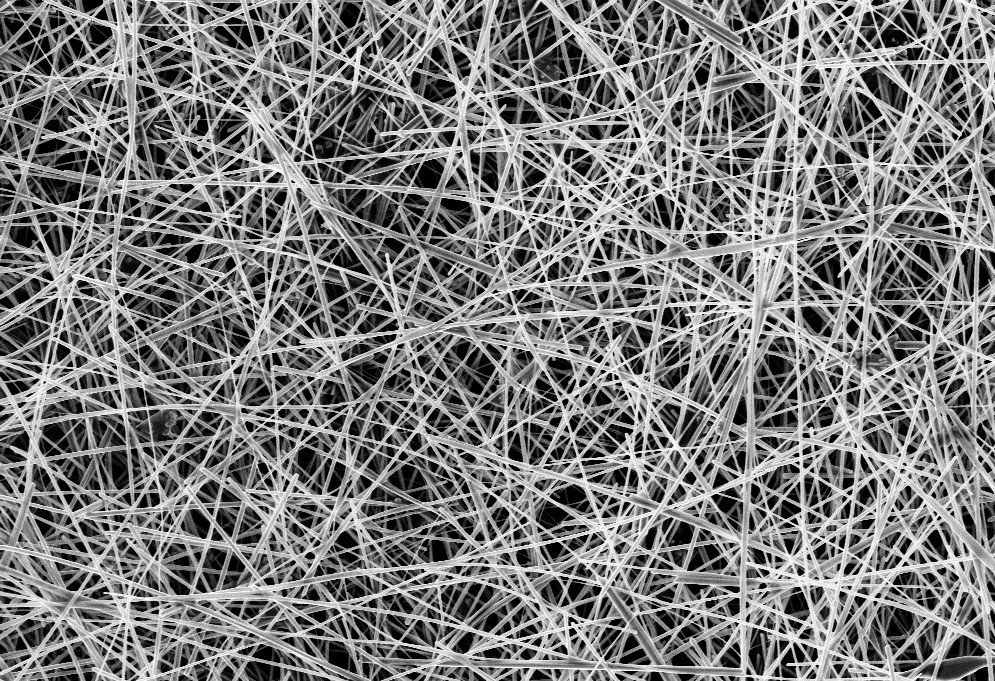
Spare parts for the car, kitchen utensils, food and even human organs – there’s hardly anything left that can’t be produced with a 3D printer. A research team from the University of Hamburg and DESY has now developed a new process for producing transparent and mechanically flexible electronic circuits with the 3D printer. The electronics here consist “of a network of silver nanowires that can be printed in suspension and embedded in various flexible and transparent plastics (polymers)”.
With this technique, a wide variety of things can be printed that could not be produced in this way before: Light emitting diodes, solar cells, tools with integrated circuits or even a flexible capacitor. The team around Tomke Glier, PhD student at the University of Hamburg Department of Physics Institute for Nanostructure and Solid State Physics CFEL, took this as an example to demonstrate the potential of the process.
“Functionalizing 3D printable polymers for different applications was the goal of this study”, reports Michael Rübhausen, physics professor at the University of Hamburg at CFEL. “With our novel approach, we want to integrate electronics into existing structural units and make components more intelligent in terms of space and weight”. The scientists have precisely analyzed the properties of the nanowires in the polymer with the bright X-ray light from DESY’s research light source PETRA III and other measuring methods.
“At the heart of the technology are silver nanowires, which form a conductive braid.”
… explains Tomke Glier. The silver wires used are a few millionths of a millimetre thick and 10 to 20 thousandths of a millimetre long. Detailed X-ray analysis has shown that the structure of the nanowires in the polymer is not altered, the researchers write. The conductivity of the braid is even improved thanks to compression by the polymer, as the polymer contracts during the curing process. The silver nanowires are applied to a substrate in suspension and dried.
“For cost reasons, the aim is to achieve the highest possible conductivity with as few nanowires as possible. This also increases the transparency of the material”, explains DESY researcher Stephan Roth, head of the P03 measuring station at the DESY X-ray light source PETRA III, where the X-ray investigations took place. “In this way, layer by layer, a conductive path or surface can be produced.” A flexible polymer is then applied to these conductive tracks, which in turn can be covered with conductive tracks and contacts. “Depending on the geometry and the material used, various electronic components can be printed in this way.”

How well does the Wire Mesh Hold Together during Bending?
For their paper “Functional Printing of Conductive Silver-Nanowire Photopolymer Composites” published in the academic journal Scientific Reports, the researchers produced a flexible capacitor. “In the laboratory, the individual work steps were carried out in a layering process, but in practice, they can later be completely transferred to a 3D printer”, says Glier. Rübhausen adds: “However, the further development of conventional 3D printing technology, which is usually optimized for individual printing inks, is also essential for this. In inkjet-based processes, the print nozzles could be clogged by the nanostructures.”
Next, the researchers want to examine how the structure of the nanowire conductor paths changes under mechanical stress. “How well does the wire mesh hold together during bending? How stable will the polymer remain?”, said Roth, referring to typical questions. “X-rays are very suitable for this because they are the only way we can look inside the material and thus analyze the conductive paths and surfaces of the nanowires.”The work involved researchers from the University of Hamburg, the Royal Institute of Technology in Stockholm, the Wallenberg Centre for Wood Science in Stockholm, the Max Planck Institute for the Structure and Dynamics of Matter in Hamburg and DESY.
Also interesting:
TU Graz tries to Realize Houses from the Concrete Printer with as Few Raw Materials as Possible
ESA Delivers First Successful Test of a Rocket Engine Made from 3D Printing
Volkswagen Chooses Additive Industries for its 3D Metal Printed Car Parts
3D Printing of Implants: Kumovis Wins Munich Business Plan Competition

